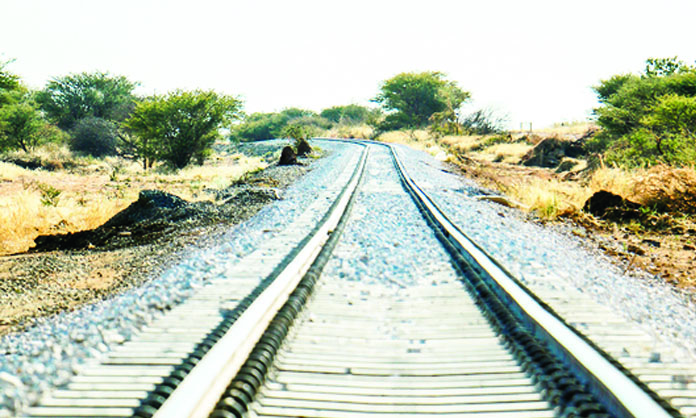The African Development Bank Group (AfDB) has approved a loan of N$3,7 billion (US$196,43 million) for Namibia to implement the second phase of its Transport Infrastructure Improvement Project (TIIP).
The project is estimated to cost N$7,1 billion (US$379,12 million).
The loan represents 51,8% of the project’s total cost, while the Namibian government will provide the remaining 48,2%.
The project entails constructing 207km of new rail track close to the existing line between Kranzberg and Otjiwarongo, using concrete railway sleepers and new rails.
The works include constructing 16 bridges, renovating two stations, and procuring 55 000 tonnes of rail to build 518km of track.
Other components include modernising the railway signaling system along the Walvis Bay-Tsumeb line to improve its reliability, safety and capacity, as well as the overall performance of the railway system.
Recognising the importance of good rail connectivity for bulk cargo, the TIIP second phase would bring the cumulative amount of rail upgraded by the AfDB to 417km.
“The project will maximise the benefits and be transformative for the competitiveness of Namibia, and assist in attaining the vision of the country becoming a regional logistics hub by 2030, while catalysing development change in neighbouring countries and the sub-region.
“The project will also connect Namibia to Africa’s copper belt, and achieve regional railway connectivity,” AfDB director general for southern Africa, Leïla Mokaddem, says.
The project aligns with Namibia’s long-term Vision 2030 for the country’s logistics value chain by tackling railway infrastructure bottlenecks and also helping to strengthen Namibia’s trade competitiveness.
Having previously funded the expansion of the container terminal at the port of Walvis Bay, the AfDB is supporting integrating Namibia regionally by building critical port and rail infrastructure to connect the country to the rest of the region, move goods, support value chains and promote trade.
As at 30 September, the bank group’s active portfolio in Namibia is estimated at approximately N$12,9 billion (US$687 million), split among 10 operations in six sectors: transport (15,6%), finance (35,1%), multi-sectors (18,1%), water (15,3%), agriculture (7,9%) and the social sector (8%).
The AfDB Group has been operating in Namibia since 1991.
In August, acting TransNamib chief executive Webster Gonzo said: “In the past decade, the government invested over N$3 billion in rail upgrades.
“However, it’s only about 24% of the current network that is in good shape, while most of it, constituting 76%, is not at the level required to efficiently run an efficient rail service.
“For us to move more cargo safely and efficiently, much more investment is required.”
He emphasised the importance of the rail upgrades, citing that the Walvis Bay-Tsumeb route was one of the company’s most lucrative routes, generating about 70% of TransNamib’s revenue, in addition to the Lüderitz-Aus route recommissioned in 2018 after being in operation for 18 years.
“There is potential for TransNamib to return to its glory days, but it is only through infrastructure upgrades and procurement on new locomotives that we can increase our freighting footprint.
“Rail is an economic enabler in moving cargo freight volumes that are unmatched. Through this consumer goods can go down, thus bringing relief.
“Therefore, the route to be undertaken is crucial, more so that of Kranzberg, because it is an intersection connecting coast, central and north,” Gonzo said at the time.
In addition, he said effective railways would reduce the number of trucks on national roads.
On average one cargo train eliminates about 30 trucks on the road. – The Brief



Leave a Reply